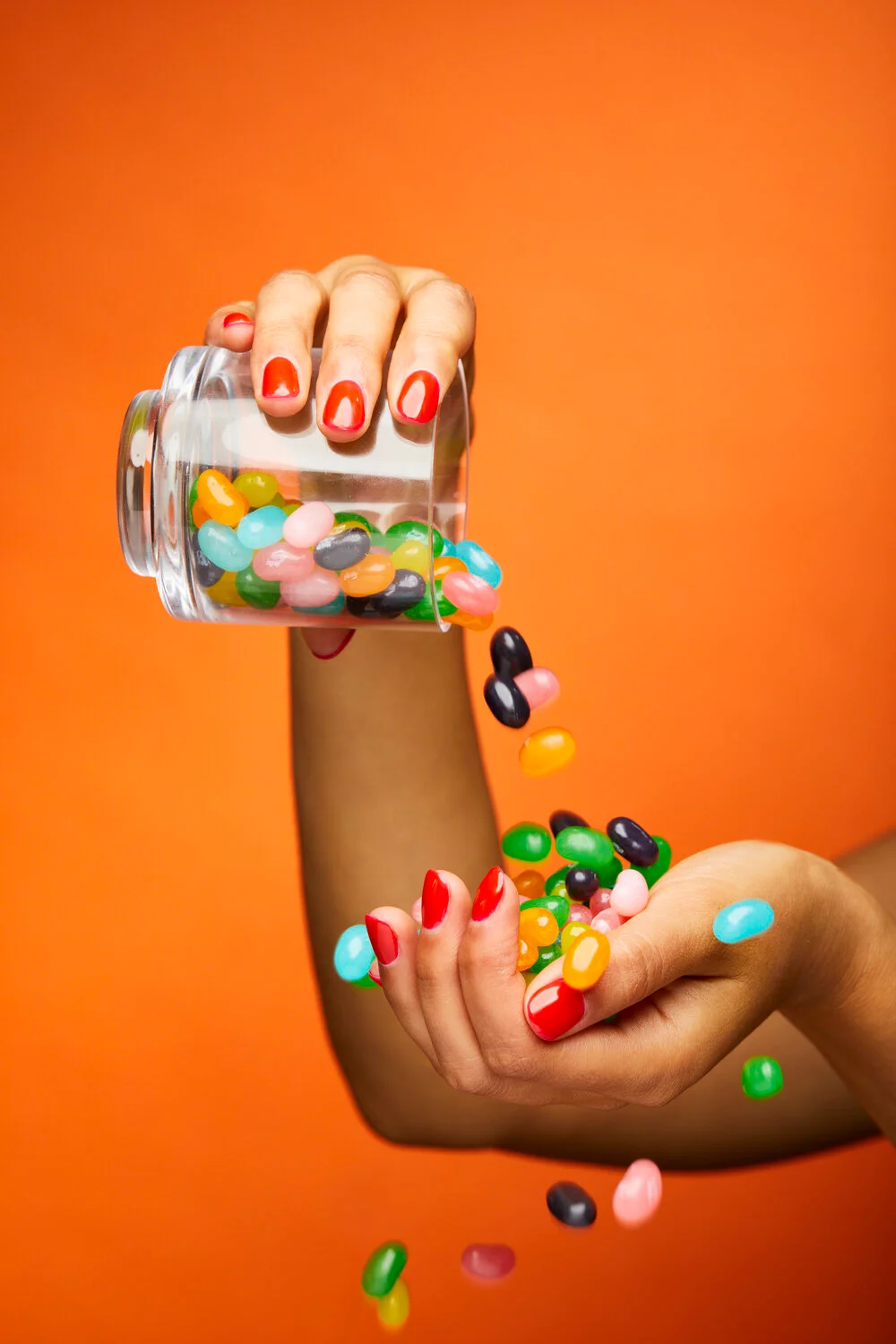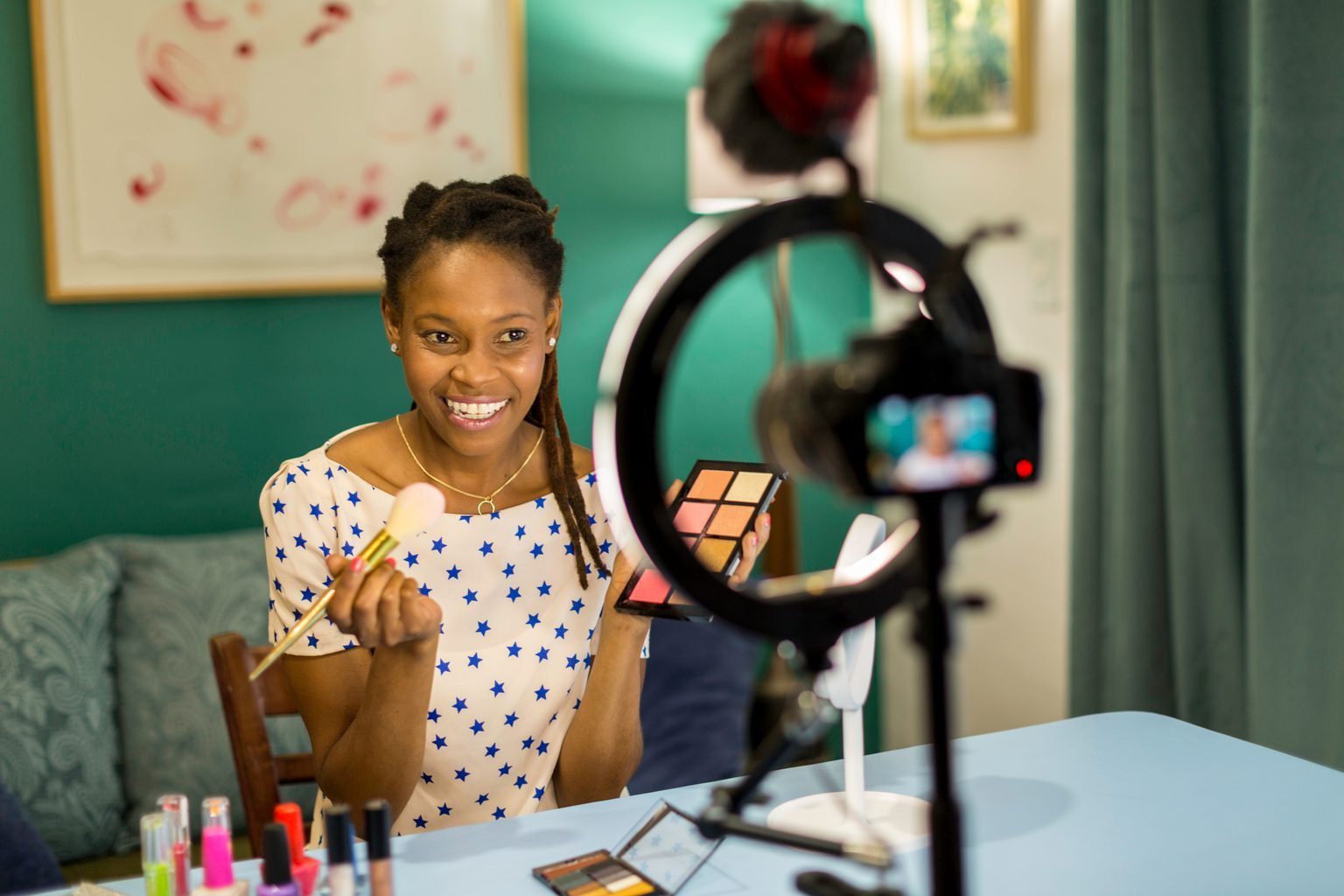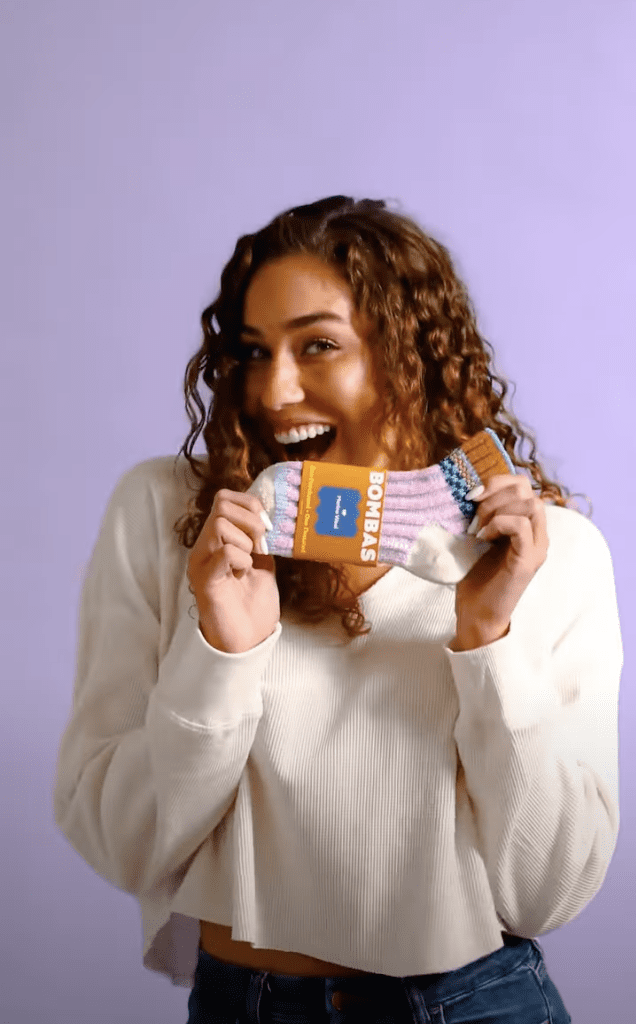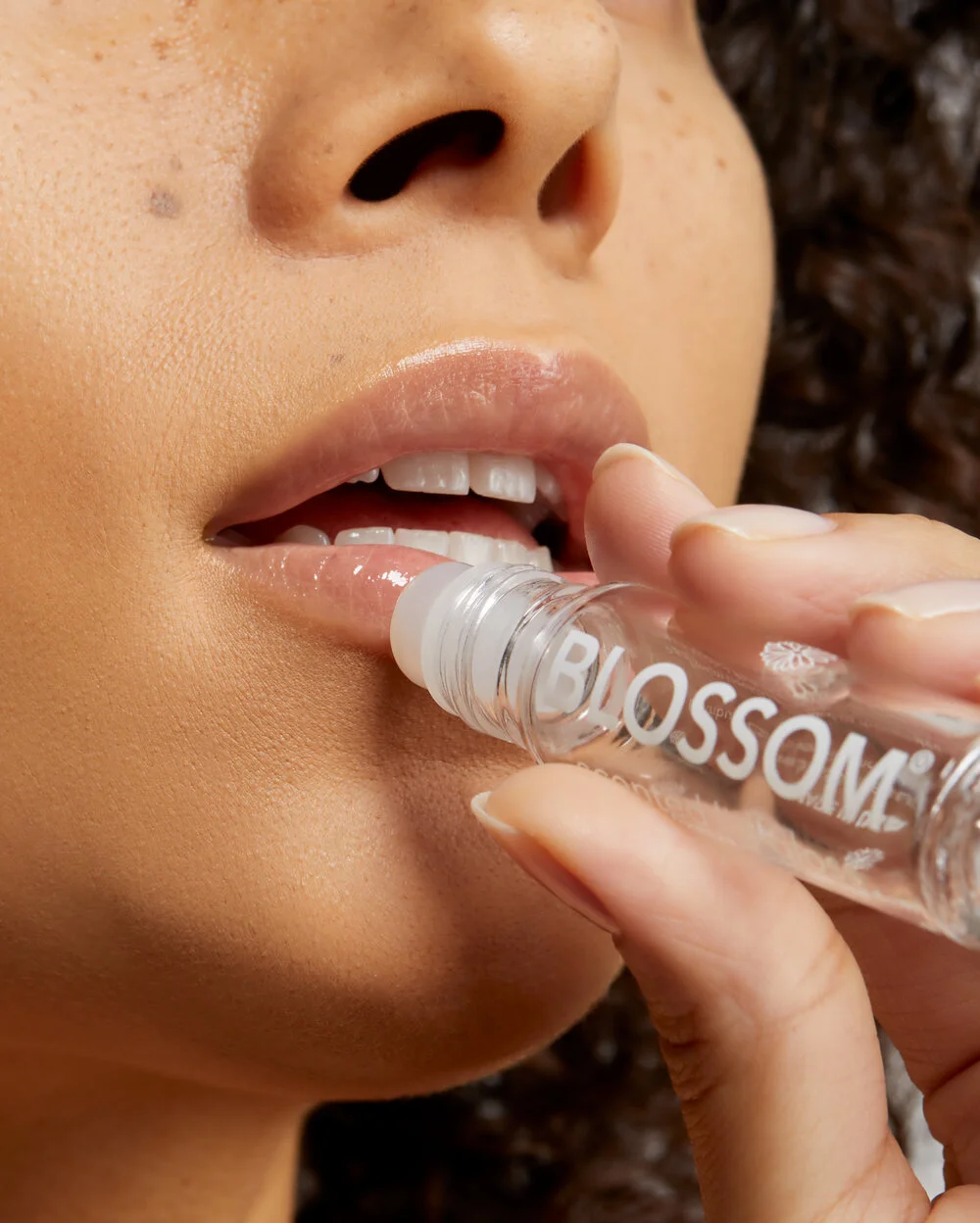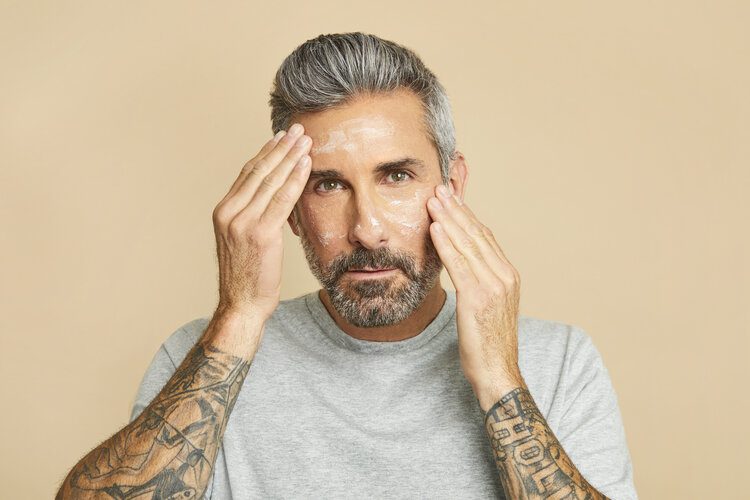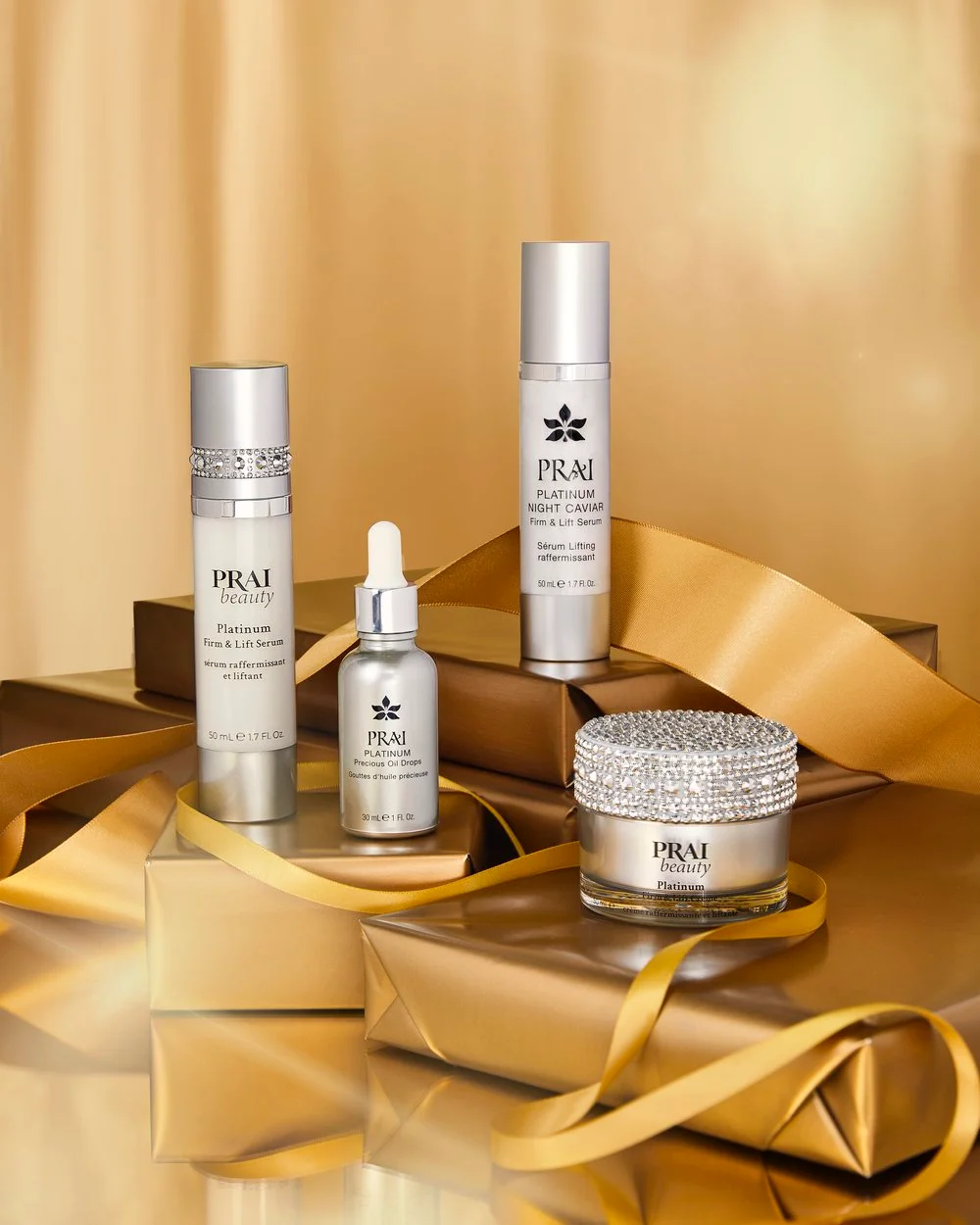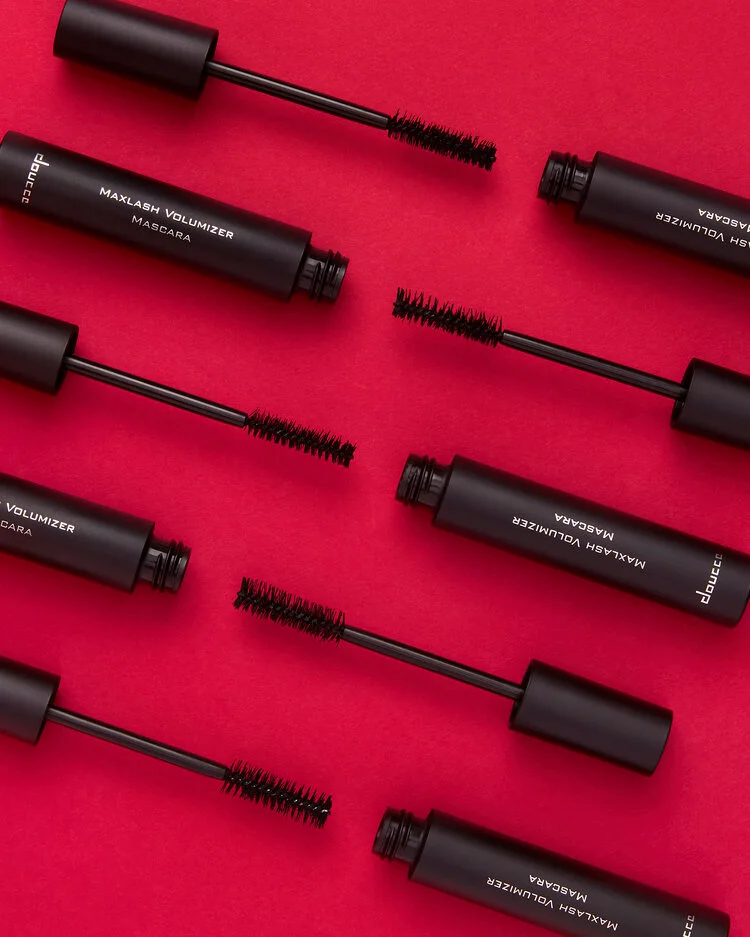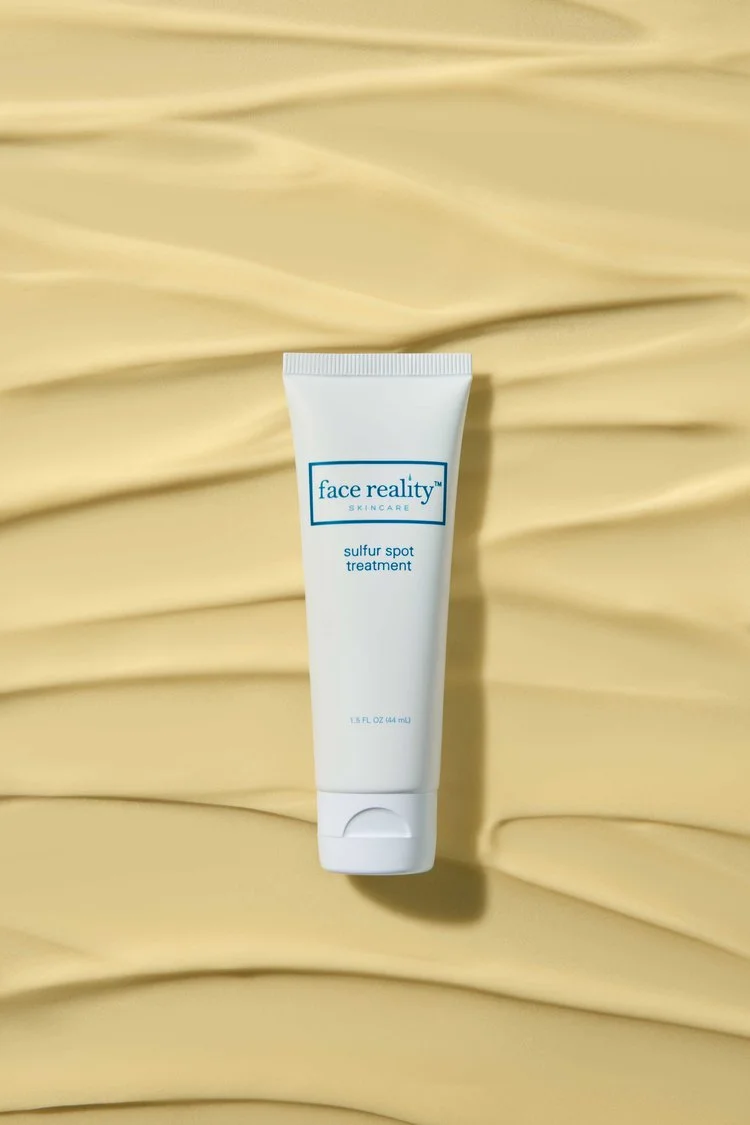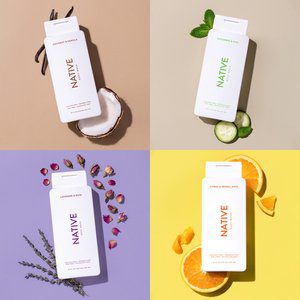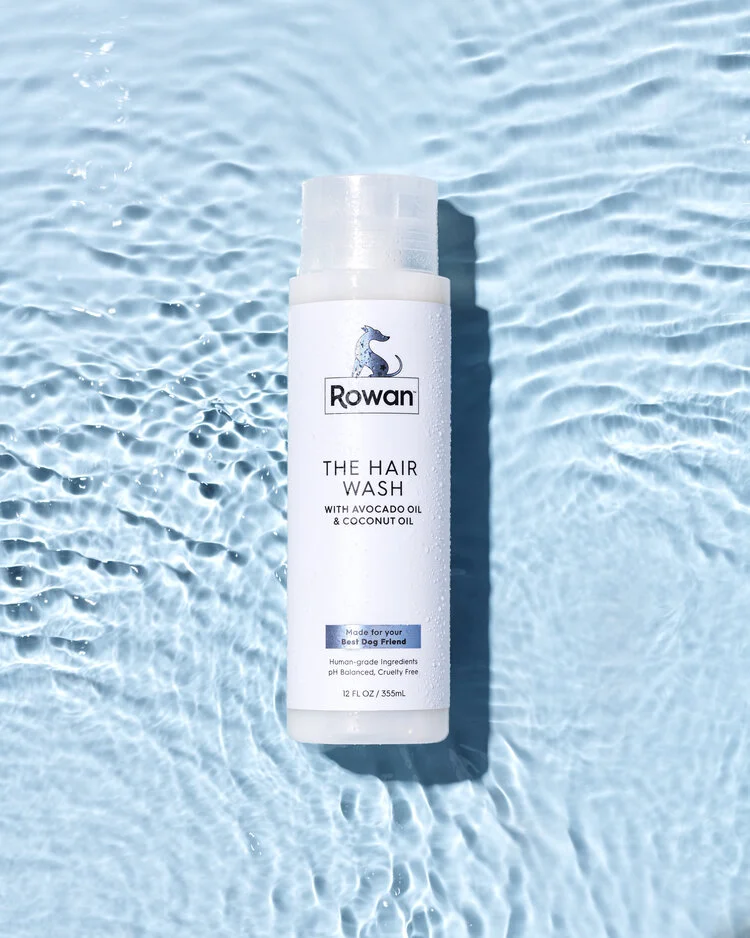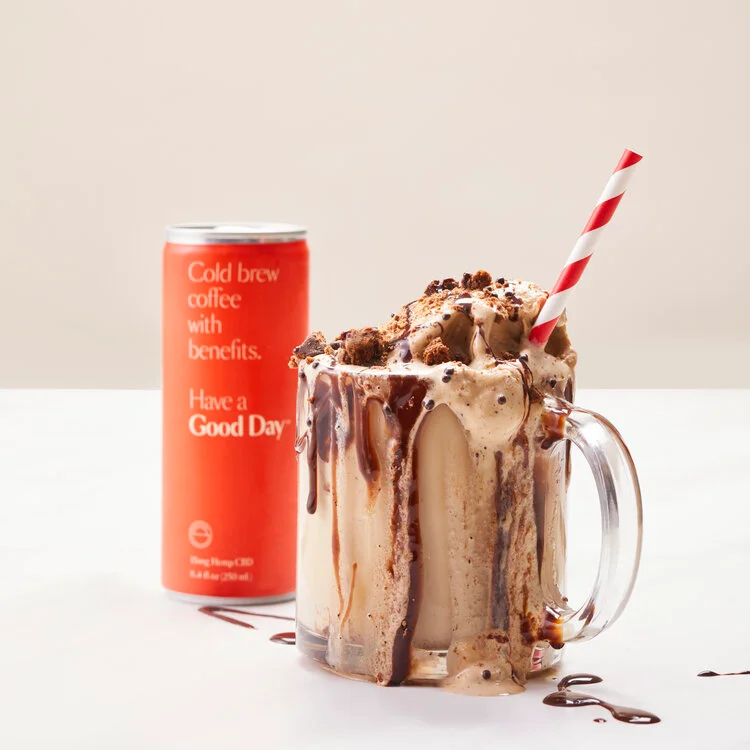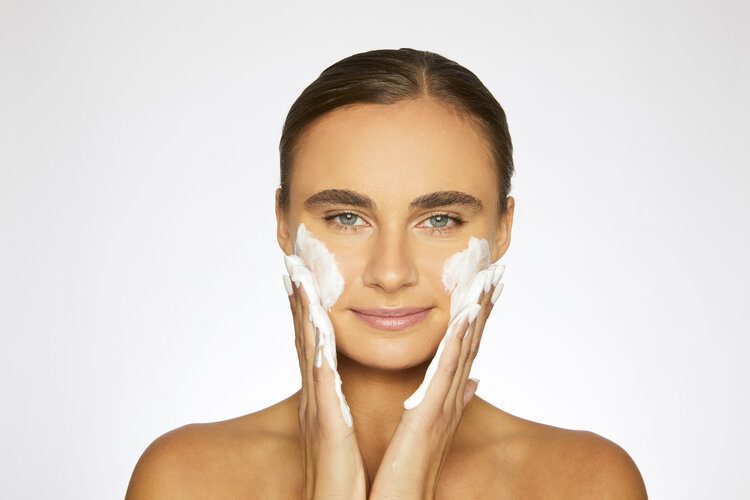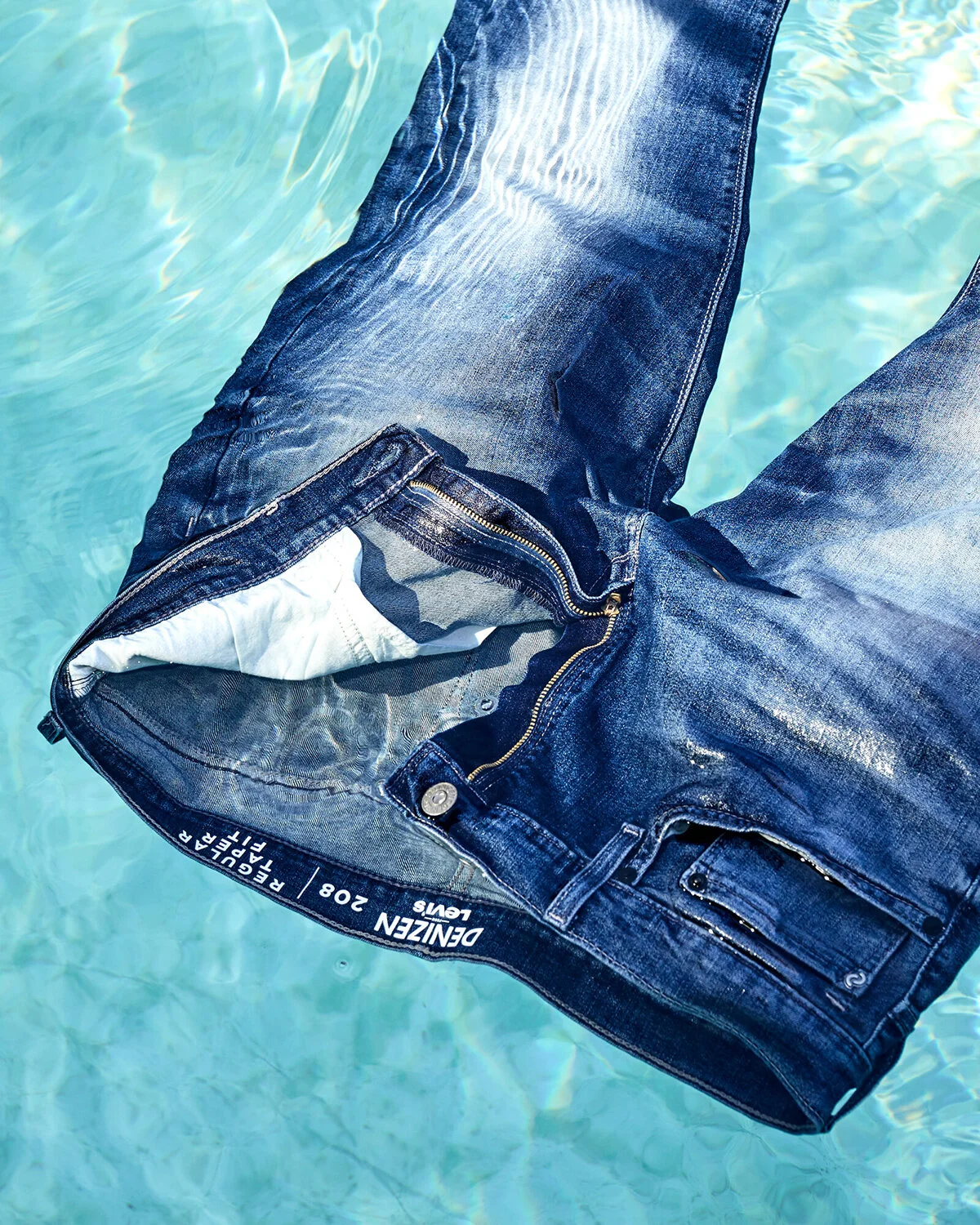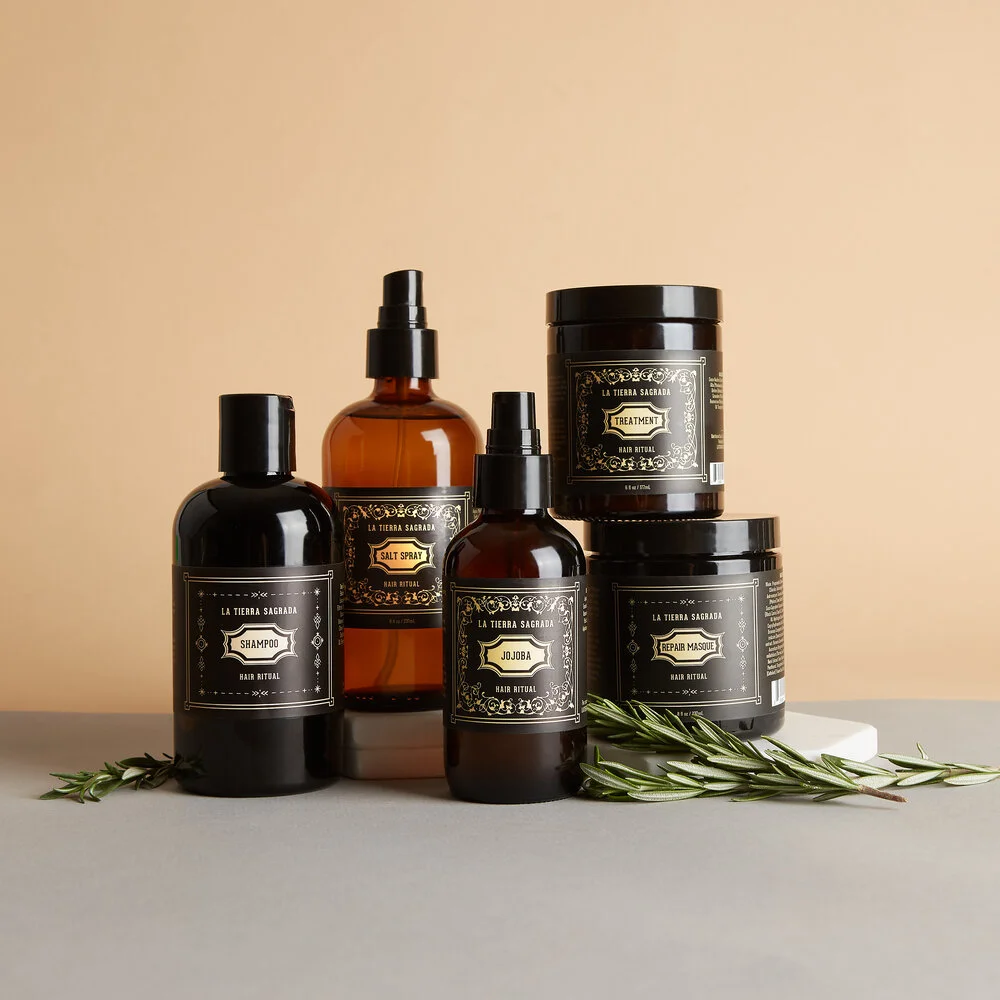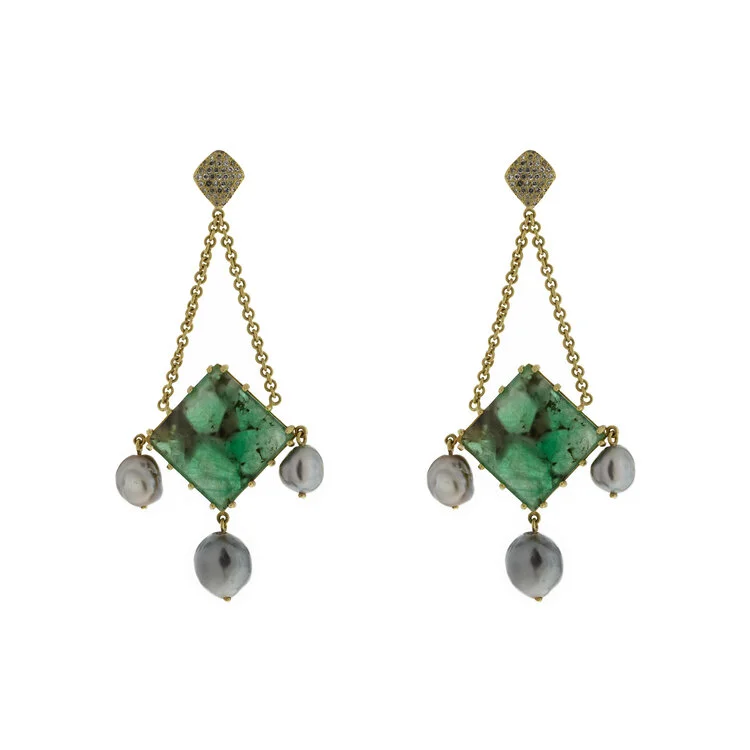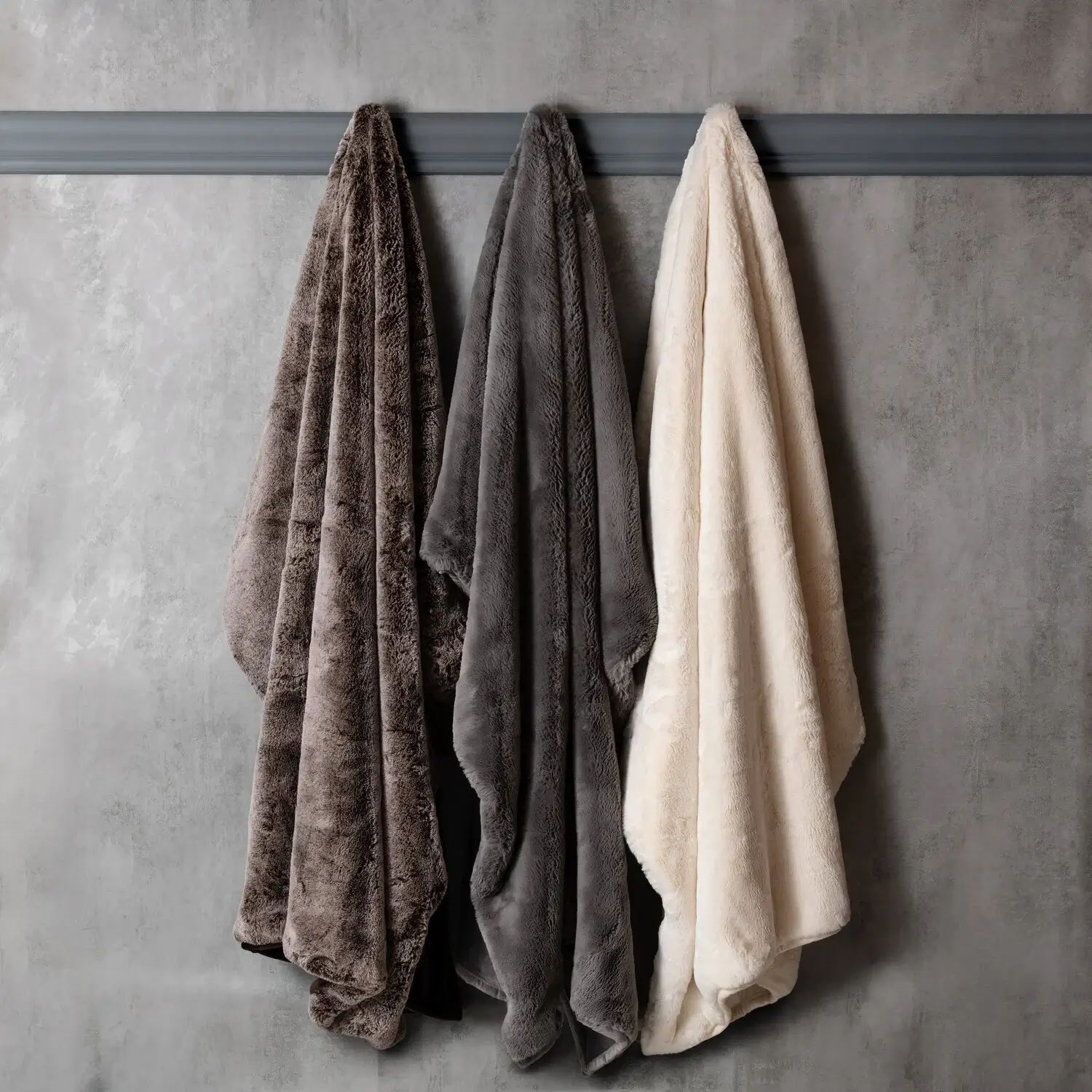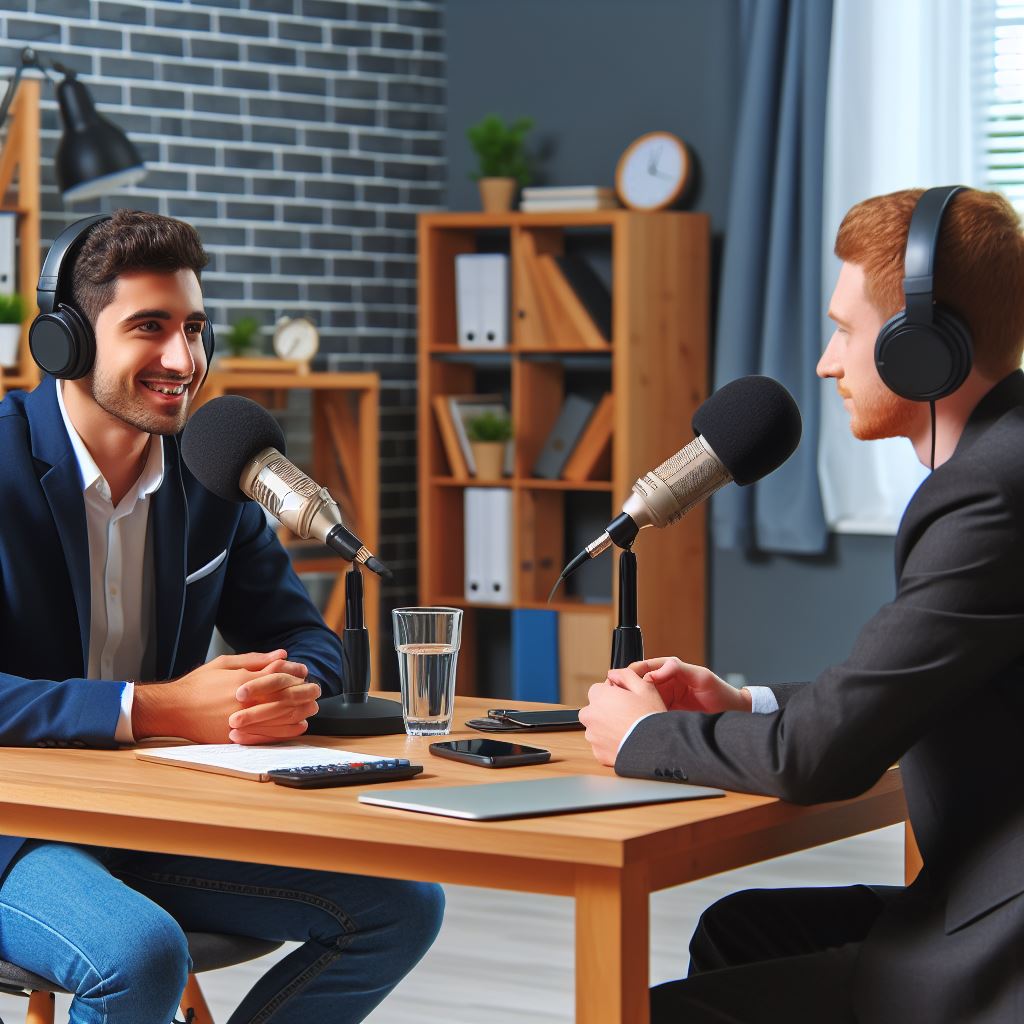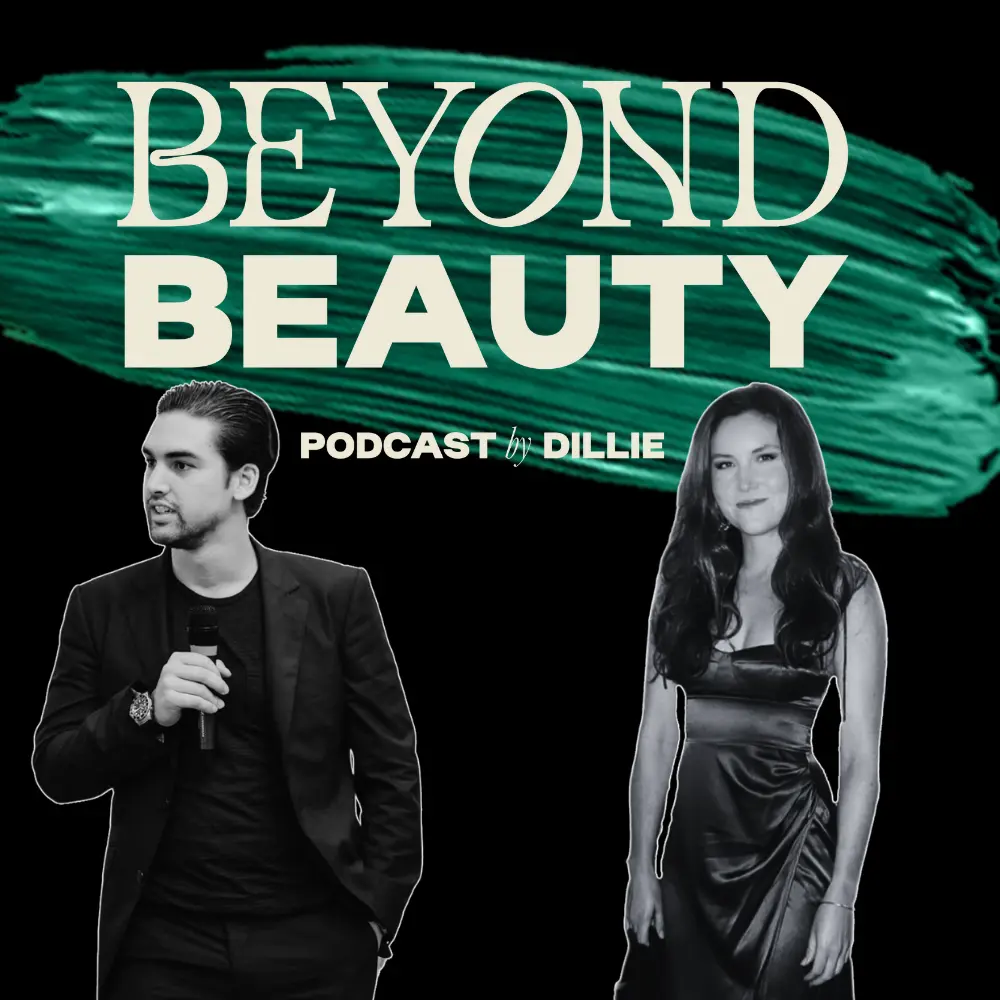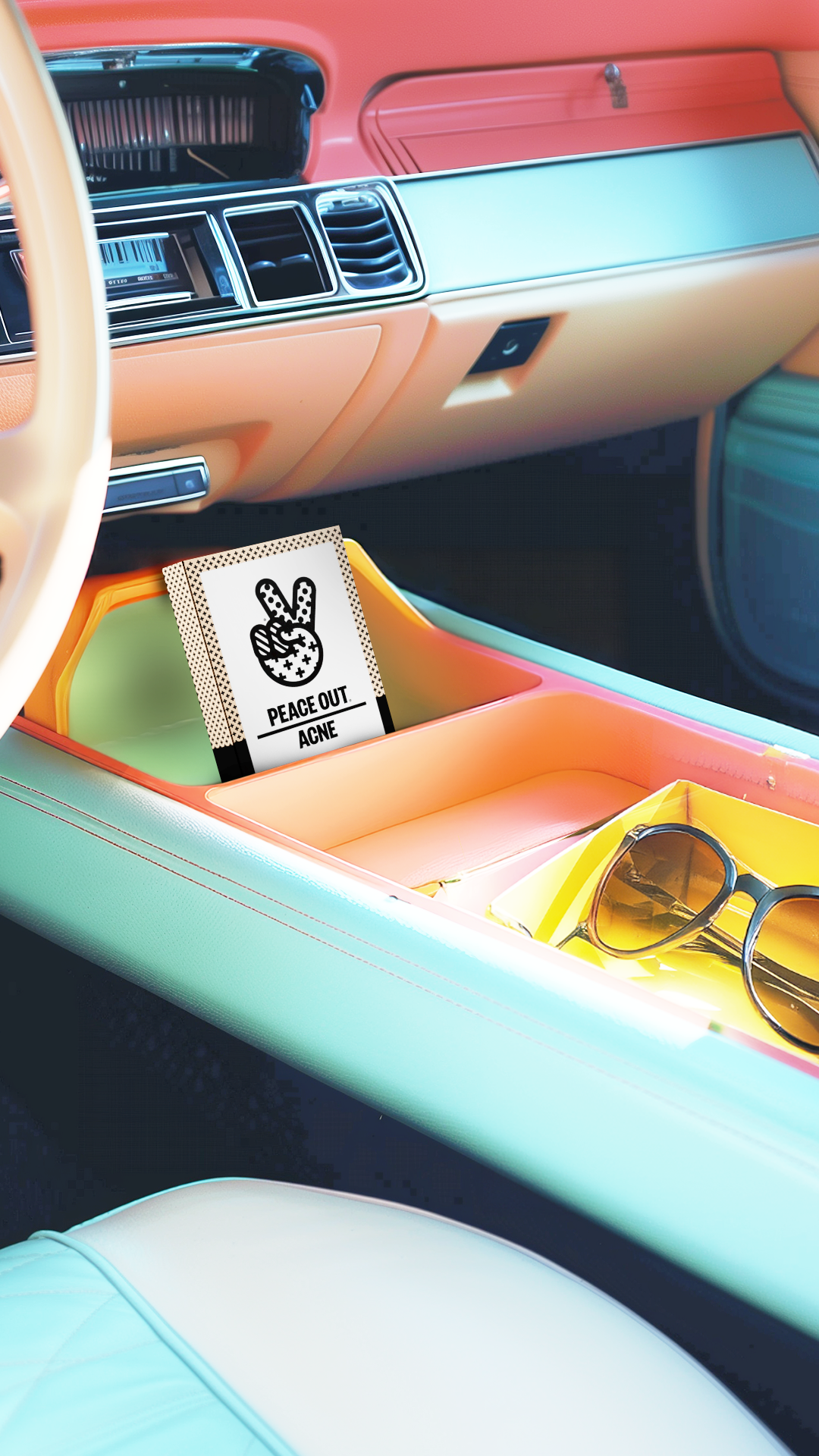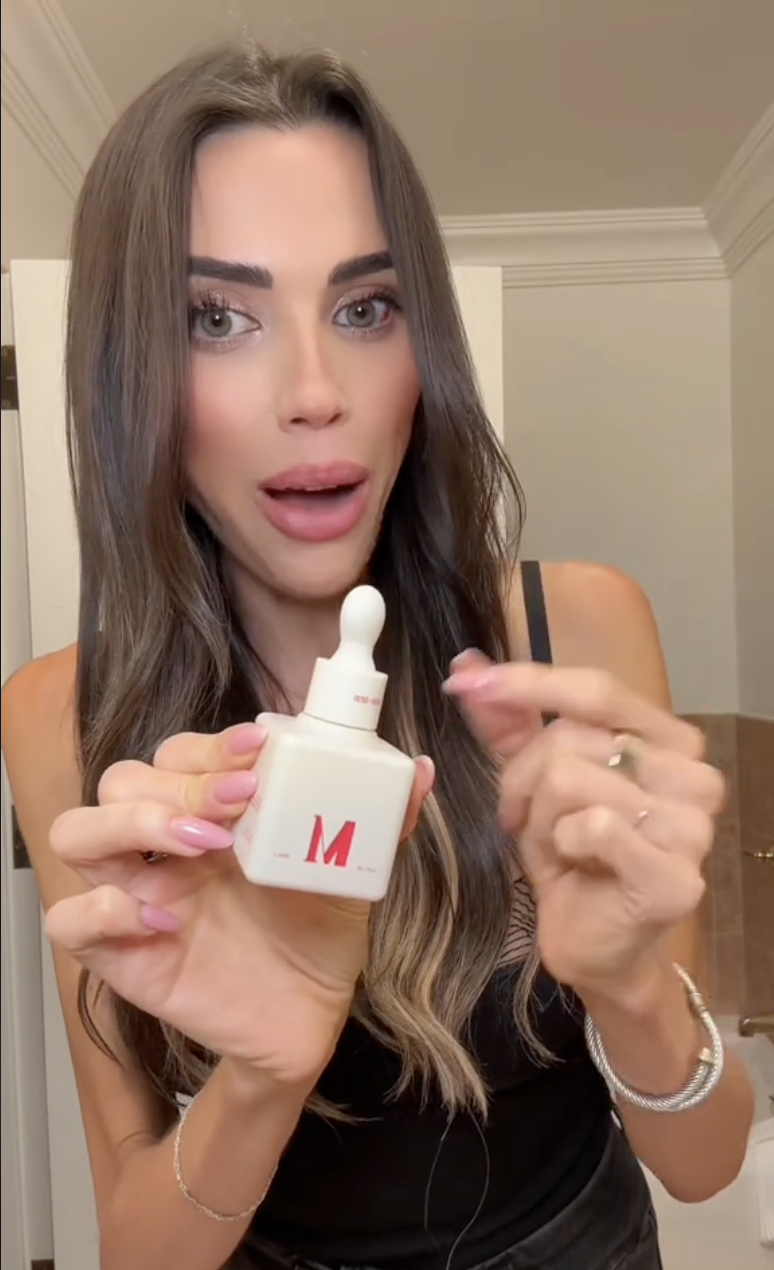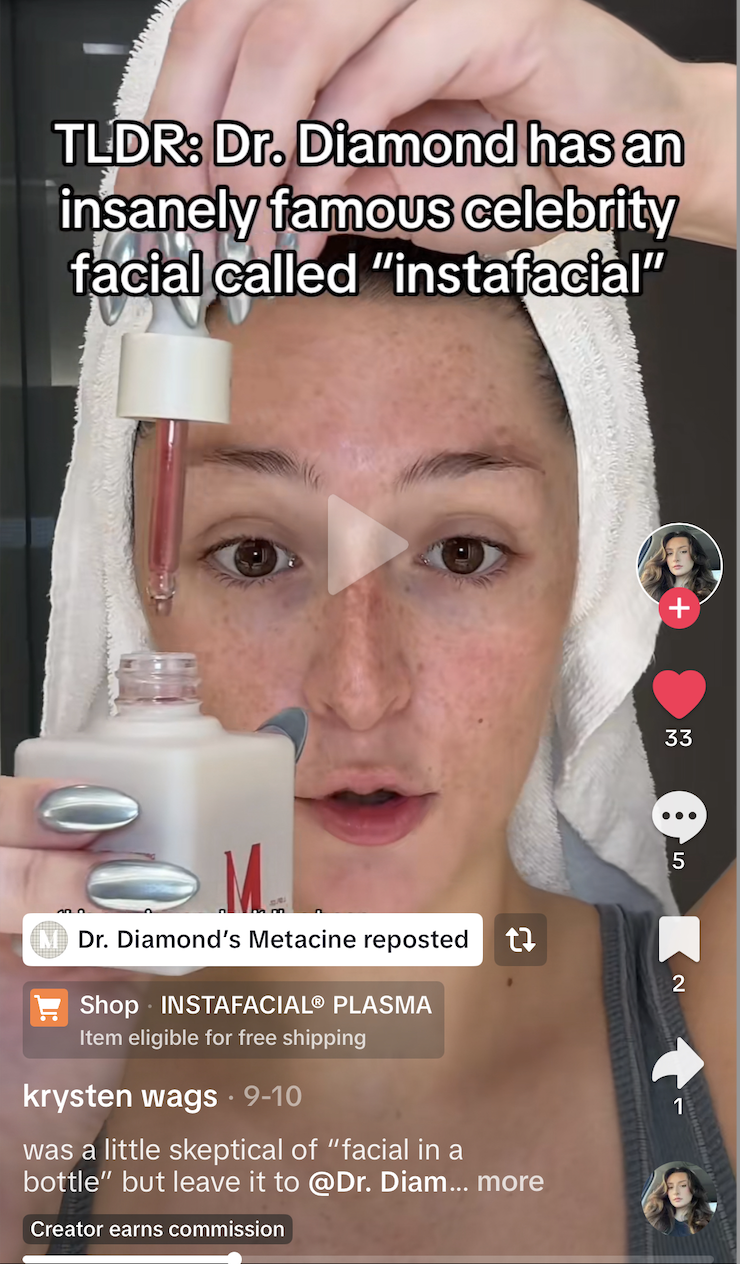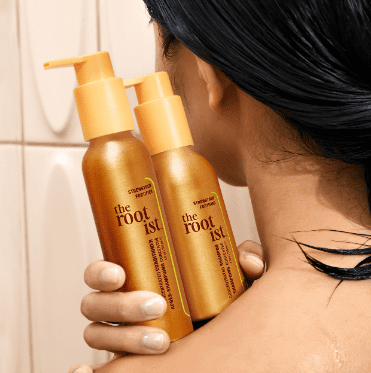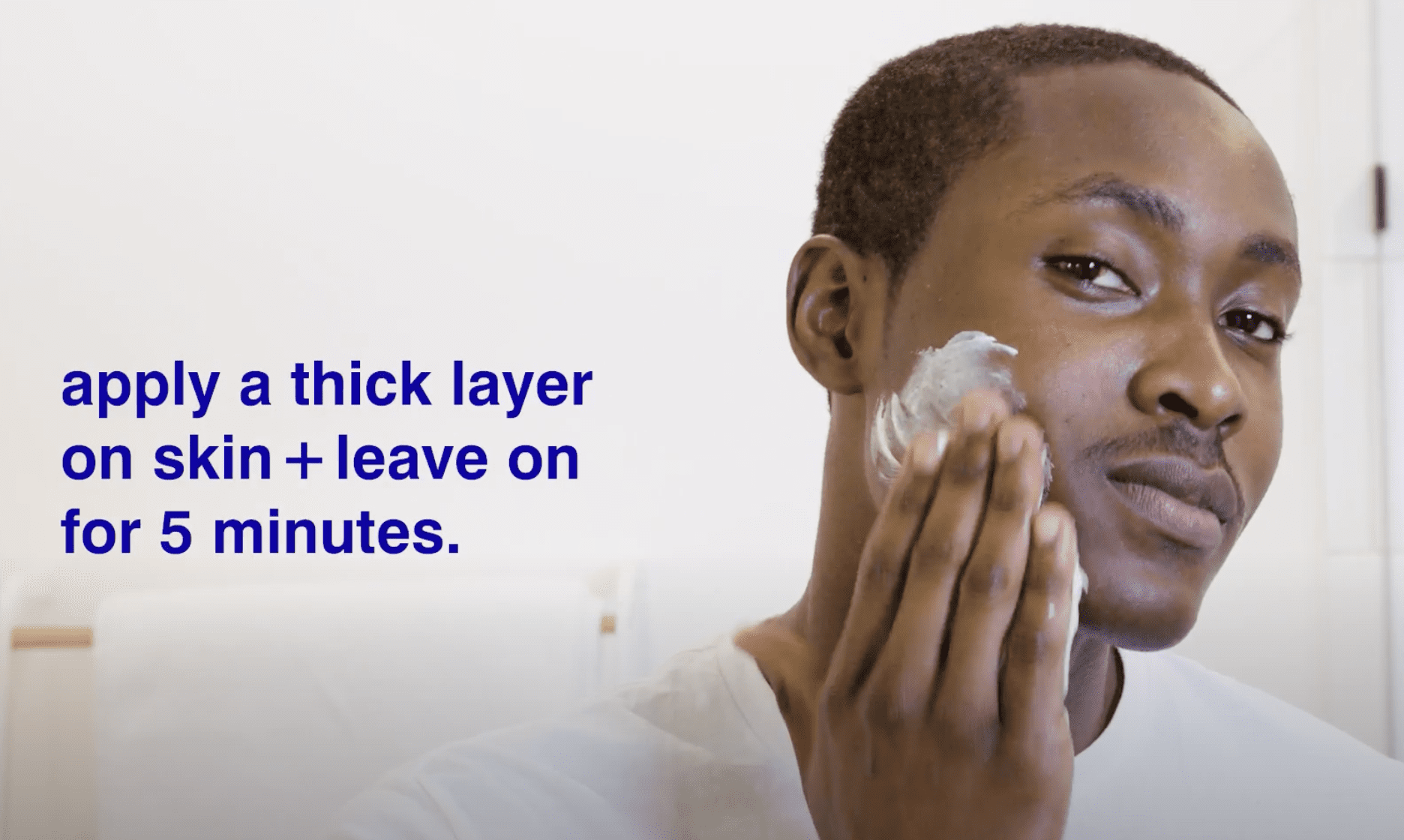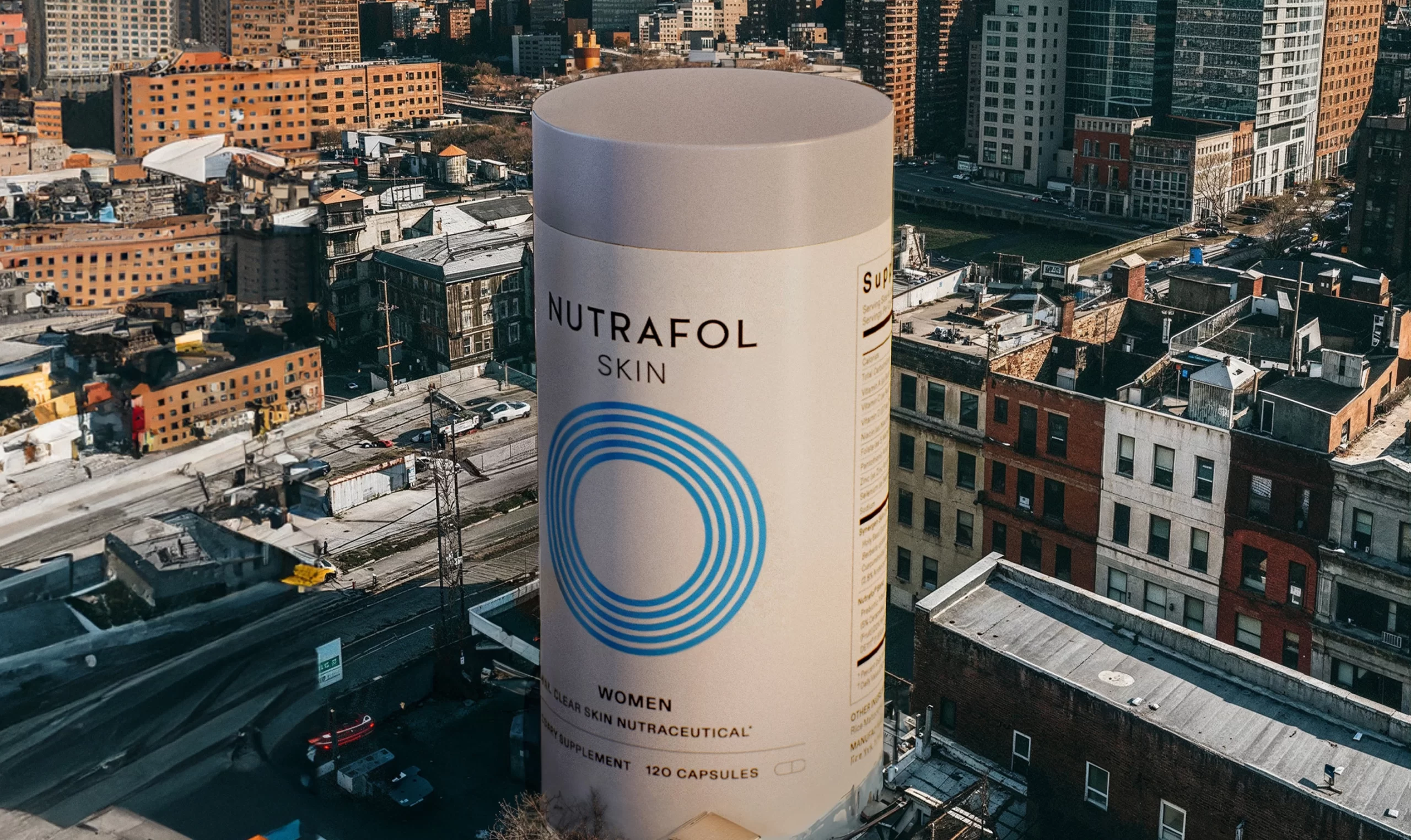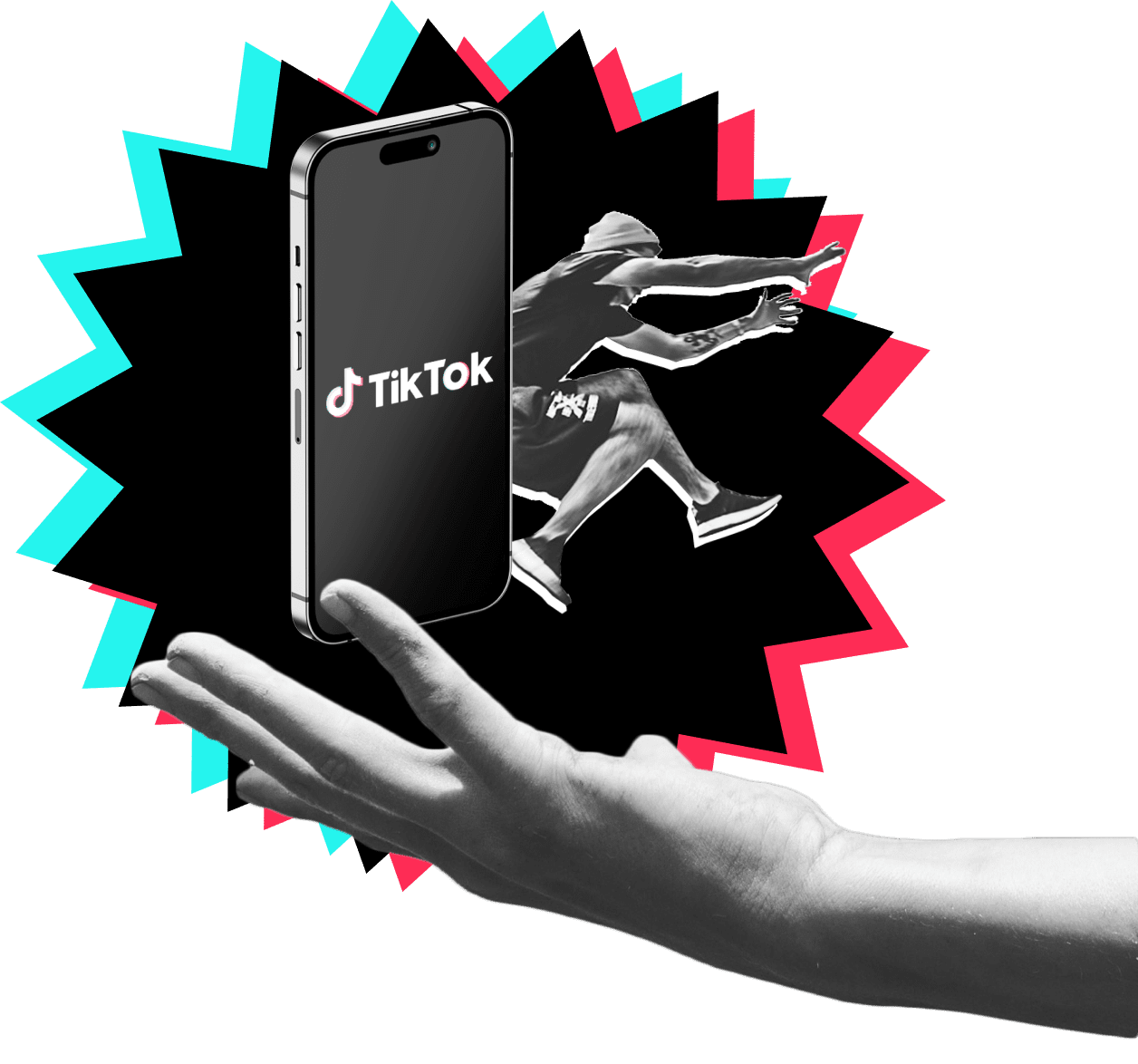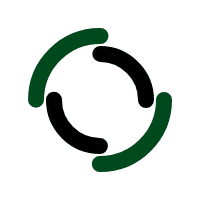In a recent episode of the Beyond Beauty Podcast, the host sat down with Sabrina Yavil, the founder of Gryme, a clean personal care brand designed specifically for preteens and teens. With nearly 20 years of experience in the beauty industry, Sabrina shared her journey from working at Clinique to creating a brand that prioritizes safety and efficacy for young skin. This blog post delves into the key themes and insights from the episode, offering actionable advice and expert recommendations for parents and consumers seeking safer personal care options for their children.
Introduction to Sabrina Yavil and Gryme
Sabrina Yavil’s journey in the beauty industry began with her roles in marketing and product development at Clinique. However, it was her experience as a mother that truly ignited her passion for creating Gryme. Alarmed by the harmful ingredients found in many children’s products, Sabrina set out to develop a brand that offers clean, effective personal care solutions for preteens and teens.
The Challenge of Finding Safe Products
As a new parent, Sabrina meticulously researched baby products, only to find that many contained fragrances and essential oils known to cause skin irritation and compromise the skin barrier. This realization led her to question the safety of products marketed for children and to seek out genuinely clean alternatives. Here are some key takeaways from her experience:
Research Ingredients: Parents should take the time to research the ingredients in their children’s personal care products. Look for products that are free from fragrances, essential oils, and other potential irritants. Consult Experts: Seek advice from dermatologists or pediatricians who can provide guidance on safe ingredients for children’s skin.
The Importance of Ingredient Transparency
Sabrina emphasizes the lack of transparency in the beauty industry, particularly when it comes to children’s products. Many products claim to be “dermatologist tested” or “fragrance-free,” yet still contain potentially harmful ingredients. Here are some tips for navigating ingredient labels:
Understand “Fragrance”: The term “fragrance” can encompass a wide range of undisclosed chemicals. Opt for products that explicitly state they are free from synthetic fragrances. Look for Certifications: Choose products that have been certified by reputable organizations, such as the Environmental Working Group (EWG), which evaluates the safety of ingredients.
The Gap in the Market for Kids’ Products
Sabrina highlights a significant gap in the market for personal care products designed specifically for kids and teens. As children grow out of baby products, they often transition to using whatever their parents use, which may not be suitable for their skin. Here are some considerations for parents:
Age-Appropriate Products: Look for products specifically formulated for the unique needs of children’s and teens’ skin. Educate Your Kids: Teach your children about the importance of using products that are safe and suitable for their skin type.
Formulating Clean Products
Creating clean products for kids comes with its own set of challenges. Sabrina discusses the importance of using gentle surfactants and avoiding harsh chemicals commonly found in mass-market products. Here are some insights into formulating clean products:
Gentle Ingredients: Opt for products that use gentle surfactants and avoid harsh chemicals like sulfates and parabens. No-List of Harmful Substances: Be aware of brands that maintain a stringent no-list of harmful substances in their formulations.
Navigating Price Sensitivity
Sabrina acknowledges the price sensitivity of consumers, particularly when it comes to body care products for children. Here are some strategies for balancing cost and quality:
Mid-Range Pricing: Consider brands that offer a mid-range price point, making clean products more accessible without compromising on quality. Value for Money: Look for products that offer good value for money, such as multitasking products that serve multiple purposes.
The Future of Kids’ Personal Care
Sabrina expresses optimism about the future of kids’ personal care products, noting a growing trend of new brands emerging to fill the void in the market. Here are some trends to watch:
Emerging Brands: Keep an eye out for new brands that prioritize clean, effective products for kids and teens. Informed Consumers: As more parents become informed about the importance of safe ingredients, demand for better options will continue to grow.
Conclusion
The episode wraps up with a call to action for parents to be more discerning about the products they choose for their children. Sabrina’s journey serves as an inspiration for those looking to make informed decisions in the beauty industry, particularly when it comes to the health and safety of the next generation. The conversation highlights the importance of transparency, education, and innovation in creating a safer beauty landscape for children and teens.
Podcast Transcript
Speaker 1 00:00:01 Welcome to the Beyond Beauty podcast, a platform to highlight the beauty industry talent, deconstruct their learnings and spark ideas for your own business. The Beyond Beauty podcast is created by daily, the leading creative agency working with the fastest growing brands in the industry. Here, we’ll interview guests from major beauty corporations, creative directors, influencers and founders, and even risk taking entrepreneurs. Our guests are not only changing the traditional beauty landscape, they’re also innovating in e-commerce, branding, and digital marketing. Join us as they share valuable advice, how they launch their business, and most importantly, ignite thought provoking conversations across beauty, tech, and marketing. Hi everyone! We’ve got here with us today, Sabrina Neville. She has been an executive in the beauty industry for nearly 20 years, working at some of the most iconic brands, including Clinique and Bumble. After having children, she was surprised to learn that most kids and baby products contain harmful and questionable ingredients like endocrine disruptors and irritants that are appropriate for developing young. Still concerned about ingredients.
Speaker 1 00:01:08 As our active boys grow older and reluctant to use typical drugstore products? Will this clean? She founded grind, a clean personal care brand for preteens and teens. Formulated without over 3600 sourced ingredients that can compromise children’s skin and health. Gryme multitasking products meet parents safety concerns while catering to kids preferences and active lifestyles, making it easier on both parent and child at shower time. The Gryme label aims to set a new standard in safe, effective personal care for the next generation. Welcome.
Speaker 2 00:01:40 Thank you. Thanks for having me.
Speaker 1 00:01:42 This is really cool. This is actually something very close for me. I as of recently, I have a godson and I. He’s three years old. He’s a little bit younger.
Speaker 3 00:01:50 Congratulations.
Speaker 1 00:01:52 Yeah, he’s he’s awesome. And I was thinking of what products are good for him, what products to get him. And obviously I live in Spain. I’m from Spain originally. He lives in Europe and so over the summer, sunscreen is one of the big products. so I was thinking, how do I figure out what products are actually good for kids? Not just they do good marketing, but actually really good and came across some resources online.
Speaker 1 00:02:16 But it’s never easy to understand this stuff. Tell me a little bit about the the background, the story. Why did you decide to get into this adventure and what you’ve been learning along the way?
Speaker 3 00:02:25 It started with when I first had my first child. I was working at Clinique, and Clinique is allergy tested, fragrance free, so I really bought into the fact that fragrances are the leading cause of skin irritation and inflammation, which can cause just some irritation and discomfort, but it also can compromise your skin barrier and cause even like bigger problems like acne or sun damage. So when I was looking, when you have your first kid, you’ve researched everything. Strollers, cribs, car seats. You’re just in research mode trying to buy the best. Buy the best for your child. So I was looking at even baby products and looking at the ingredients, and I was really surprised at all of the for the most part, the majority of products marketed for babies included fragrance, which I learned at Clinique was a no and essential oils, so that was my first kind of things did not add up, right? So it took a while.
Speaker 1 00:03:25 I know. By the way, fragrance.
Speaker 3 00:03:26 Is a no because it can have multiple ingredients in there that are sensitizing or even worse, they can be carcinogenic, they can be endocrine disruptors. We don’t know what’s in fragrance. So when you look at a bottle and it just says fragrance, you don’t know what’s what, the long list of chemicals that are included in that name. Even if it’s natural fragrance, it can contain a ton of allergens. It can contain sensitizing ingredients. It can contain. Yeah. exactly. Like products or ingredients that can be disruptive to your endocrine system, your hormones. And you don’t know because it’s proprietary. That’s considered a trade secret and doesn’t have to be disclosed in the ingredient list. And then essential oils. While that seems more natural, essential oils in and of themselves are sensitizing. So if you really want to go down a rabbit hole, there’s different grades of essential oils, and some essential oils are diluted and contain even half a dozen other ingredients that don’t have to be listed on an ingredient label.
Speaker 3 00:04:29 You really don’t know what ingredients are making up or comprising those fragrance, that fragrance scent. And when you’re talking about a baby who’s anywhere, anywhere from weeks to even just like your godson, three years old, their skin is so fresh and so young and it’s just so beautiful. And then you’re intentionally putting ingredients that are known to be sensitizing on adults on this young skin. It just didn’t add up for me. So that was always like my biggest moment where I was where I was surprised and disappointed, disappointed in the industry. And there are fragrance free options out there. some are fragrance free but include essential oils. So that was something I was looking out for. And then there were other fragrance free options that might have other. And as I got down the path to where I am now, they were fragrance free. But they also included ingredients that I also don’t necessarily agree with. So it started back when I had my first child and was just like researching what to buy. And that continued.
Speaker 3 00:05:41 So as they grew older and I actually have three now as they grew older, trying out different brands that were clean, right, that billed themselves as better. So I’ve gone through a whole cycle of the better kids, baby kids, baby toddler brands.
Speaker 1 00:06:00 What do you find these ones? So we know. Is there a search engine? Is there something you use?
Speaker 3 00:06:05 No, I’m just looking at drugstore brands, googling, clean, just reading. But I’m going to. I was an added advantage, but still in a disadvantage from where I sat because I was doing marketing and product development and at Clinique. So I knew enough to be dangerous and I knew enough to look out for some obvious things. But even when I started Gryme and we can talk about this, I’ve been on a huge learning curve in terms of ingredients over the past few years. The things that I’ve uncovered as I have been working to formulate the line, is that there’s just a lot of ingredients that are commonly used on the market that are probably generally regarded as safe for adults, that just aren’t great for kids, but are in a lot of kids products.
Speaker 3 00:06:49 So it started with, okay, let’s just weed out the products that contain fragrance. So let’s start with the fragrance free. Just trying to read labels that use gentler surfactants. Those are the cleansing agents that you know aren’t as irritating to young skin. So I really just try to be as conscientious as possible. As they grew older, a couple things. Like one, those baby products, they look like they’re for babies. So my kids are older. They don’t want to use like the baby stuff. Also, my kids are really active. I’ve got three boys. They are routinely racking up 15 to 20, 25 steps on their Fitbits every day. They come home smelly and they’re young. They’re not even like teenagers yet, and they’re gross. So I also needed something that had a really high performance. And so when I was talking to my friends, we’ll be at a football game. It’ll be a beautiful sunny day, and we’re like, shoot, it’s not supposed to be sunny in February.
Speaker 3 00:07:46 What are you guys using? We should have used sunscreen. Then we all talk about how the kids hate sunscreen. And we’re talking about what do you use? What do you use? So we’re sitting there on the football field just chatting about products and oh my. My son loves this one. So I’m looking it up and it’s got all sorts of silicones and all sorts of junk in there. And I’m like, okay, that’s not for us. I’m learning that most of the parents and I think this is general, or the overwhelming, is that most parents are buying now products, maybe from the drugstore, but that what they’re using for the whole family, once a kid hits about 5 or 6 and starts outgrowing the baby stuff, they just basically start using what the parents are using and what the whole family uses. It’s convenient. You can buy one or multiple bottles of the same stuff. You can go shop at the same place, it says dermatologist tested or paraben free, clinically tested.
Speaker 1 00:08:39 Those people are not.
Speaker 1 00:08:41 The general public isn’t educated on how to discern the different types of products, which.
Speaker 3 00:08:46 Is where the marketing gets into the play because like I said, I was starting from a better place than most people, but I was still in a disadvantage. And I think most people are, because there’s really a lack of transparency in the industry, and there’s also a lack of consensus about what’s good and bad, and there’s a lot of gray area when it comes to the marketing. Something will be dermatologist tested, clinically tested, paraben free, sulfate free, phthalate free, BPA free. Chuck, you feel really good. You’ve heard about this brand before. It’s a trusted brand or a well-known one, and you say, great, I can buy that for my whole family. And it’s for sensitive skin. And listen, Gryme is all of those things, too. We’re dermatologist tested, pediatrician tested, allergy tested, all of those things. But what that’s testing for is a skin irritation. It’s not really saying it’s not vetting the ingredients on the back of the label, where a lot of the brands will have petroleum based, mineral based, mineral oil based Ingredients pegs the long.
Speaker 1 00:09:50 Term damage basically, versus a ton.
Speaker 3 00:09:53 Of endocrine disruptors sensitizing ingredients. They’re saying that we don’t contain three classes of ingredients, but in it’s paraben free. But on the back they’re using BT or MIT, which is even worse. So the marketing is really misleading, and it’s intentionally meant to ease people’s minds and convince them that this is clean and safe, because they know how difficult it is to read the back of the label, especially since a lot of the ingredients are really hard to pronounce and confusing.
Speaker 1 00:10:28 Because if I think of my personal case when I go and look for products, I discovered a great website called EWG. I’m sure you’ve used it many times and it is fantastic. It just doesn’t have all the products, right? There’s a lot of products it doesn’t have, but even just out of, frankly, laziness sometimes you’ve got a drugstore, a convenience store and shampoo. You run out of shower gel and just want to grab whatever. It’s there, and you’re going to look at the labels, you look at the packaging, what looks cleaner or better, and then you end up just going for the utility of it versus making an active decision to choose the better option.
Speaker 3 00:11:02 It’s really challenging to make a really informed decision at this moment because again, there really aren’t clear guidelines of this is a good this is bad, stay away from this, use this. And EWG is a great resource. I use it too. And all the ingredients that are in our products are ones or twos, which is the lowest number? Which is the best number. Everything that we learn about ingredients is with adults in mind. So this is adult skin. So there will be ingredients that are ones which is the best number on a website that Gryme will not use because we don’t think that’s appropriate for the young skin. And so Gryme is not designing products for the 0 to 3 year old. There’s a whole baby category and it’s a multibillion dollar business I’m looking at once they graduate from those baby products, because there are some good baby products in that category. Once they graduate from the baby products, there’s a void between them turning five, six, seven, becoming more active, and then needing acne products.
Speaker 3 00:12:09 There are some kids lines on the market when you look at it as in comparison to the entire market, it’s really small and it’s still very niche. What’s really been encouraging is over the last year and a half, there have been a lot of new kids and teens brands popping up. I think they probably saw the same thing I did. A lot of us have kids and they got older and were not finding suitable options, and so we decided to develop it ourselves. So you’re seeing a lot more options cropping up for kids and teens, which I’m really excited about because I think there’s a whole opportunity to grow that category and take share away from general market drugstore, because the general market drugstore brands, while they say the right things and they’re from brands that have been around for a long time that you’re probably comfortable using on yourself, they really aren’t developed and designed for young kids. And so I’m really excited for there to be more of us out there trying to do what’s right for kids and teens, so that parents stop for a second and think, is the product that I’m using for myself the right product for my kid, or does my kid need something really designed for them?
Speaker 1 00:13:23 What brand? Designing for kids? Is it more expensive? Is it like why are they not doing the right way? From the beginning, I.
Speaker 3 00:13:30 Think when you’re talking about a really big company, they basically have a base. That’s something that’s working well in the market, and then they put like an apple or a strawberry scent on it and a cute package with some cartoons, and they say it’s for kids. It’s not designed for children or with children really in mind or no.
Speaker 1 00:13:48 The organization is vetting that at all.
Speaker 3 00:13:50 Right. And they’re buying you know, some of these ingredients are working with labs that buy these ingredients at scale. So if they’re using these surfactants that they know work in body washes or shampoos for adults, they’re going to use those same ingredients that are already like tried and true and conventionally used. That’s the other thing is for decades, chemists, they’re scientists and artists and they know what works or what is in their toolbox. So if you have a chemist that likes working with these surfactants and knows how they work and knows they’re going to get the right lather and knows that they’re going to get some right for the right efficacy, they’re going to use that combination of ingredients over and over again.
Speaker 3 00:14:29 But that may not be what’s right for.
Speaker 1 00:14:32 It’s interesting, I always one of the conversations we had with a formulator not too long ago, he spoke about the the quantities and the key ingredient list, and how a lot of the products in the market don’t even have enough quantity of key ingredients to be to make a significant difference. And if it was the case, if they had the quantities that was necessary to price would be so prohibitive that the market simply just couldn’t afford those products. So what they end up doing is using much lower quantities that actually don’t have much of an impact on the things they claim in their marketing. Right? And so I wonder if with kids products, a little bit of the same thing, where now you obviously have a baseline product and you want to make it easier to transform into a kid’s product, but it’s also just maybe it’s really expensive to build really high quality products. Right? And you have a small percentage of the market that can actually afford or could afford to buy the best kids, and then everybody else still needs a solution.
Speaker 3 00:15:29 That’s a it’s a really interesting solid point. And when I started formulating and I’m also ordering it lower quantities that then the big mass brands do. So there’s a couple things. First, there’s the difference between mass and prestige. So prestige is what you would see at Sephora spending $50 on a moisturizer, whereas maybe you’ll spend $20 on a moisturizer from Olay or something right in the drugstore. The cost to manufacture those are probably not materially different, but there is a premium for certain points of distribution and perception. So that’s the premium market.
Speaker 1 00:16:11 So when you’re the same the same product, it’s just packaged differently. It may not be some places.
Speaker 3 00:16:16 It’s not so different that the cost would be wildly different support. So the quality.
Speaker 1 00:16:23 And quality could not be that different.
Speaker 3 00:16:25 Then I would say for the most part, it’s not when it comes to body care or personal care products, particularly for kids. And most moms are shopping at target or the drugstore wherever it’s convenient. Amazon price is a consideration after I don’t know, once you have your first child, you’re like, okay, I’m spending $1,000 on a stroller and $300 on a car seat.
Speaker 3 00:16:51 You’re just it’s raining money. After a while, you realize that was ridiculous and you could have gotten by on a lot less. So the third child never gets that stuff unless it’s a hand-me-down. So by the time the children are older and they’re starting, oh, I’m just going to bring you into the fold. People are surprisingly price sensitive for. Maybe it’s not surprising, but people tend to be more price sensitive about body products than they are about their face. Skincare products, ice creams, facial products. There’s no ceiling. with body care, I think people are a little bit more price sensitive. And when it comes to kids, they’re not little anymore. They learn their lesson. They’re not so precious. 9.997996999. Those sound like good prices. That’s fine. I’m one of those people. But then when I started formulating to get to scale and the ingredients that you would have to use to hit those price points, we’re talking like really synthetic ingredients, which in and of itself isn’t bad, but synthetic ingredients, we’re talking ingredients that are potentially irritating, that are a little bit more questionable, ones that might have endocrine disruptors or they’re just not the clean ingredients.
Speaker 3 00:18:10 So when I went to make Gryme, partnering with a reputable lab, they’re got a long history in clean, and my no list is even more stringent than they’re used to. And right now, this product, this is 100% natural, naturally derived. So there’s no synthetics in this product. It’s my body and face wash. It’s a two and one and my price per unit is materially higher than what you would pay, what another brand would be paying as their cost of goods. My price point should probably be in the 30s to support my cost of goods, to have a really healthy margin, but because of price sensitivities and I’m not marketing to adults, like I might spend $30 on a body wash for myself, but most moms aren’t going to spend $30 on a body wash for their children, especially since kids go through them so fast. So I’m in this place where I know my price. My cost of goods is materially higher and I could never sell for 6999999. and in order to do that, I would have had to compromise significantly.
Speaker 3 00:19:19 And the biggest compromises are fragrance because fragrance costs a lot. So having a cheaper fragrance and we talked about fragrance can have a load of ingredients that you have no idea what’s in them. And even when you buy from suppliers, they may not disclose all the ingredients in the fragrance that you purchase because it’s proprietary to them. So as a brand, you might be buying a fragrance from a supplier and have no idea even what you’re selling to your customers. So that’s one. The second place to skimp is your surfactants. That’s your cleansing agent, because that’s a big part of the proportion of your formula. And you can use less expensive ingredients like sulfates for one, because they’re have a bad rap right now. So they’re pretty cheap sodium olefin sulfate. It’s hard to say that one is really inexpensive. Kokomo propyl betaine is a very inexpensive. And when I go to the drugstores and I see it, you know, I turn I look at labels all the time now, whenever I see a really strong price point, I always turn it around.
Speaker 3 00:20:20 And nine times out of ten, it’s got sodium olefin sodium olefin sulfate and Kokomo betaine, or it’s got sulfate. And when I talk to my lab. Oh, and the third part is, is your preservative. And so some preservatives are more natural than others and safer, and some preservatives are very effective. But pretty nasty, right? And you can really save a lot when you skimp on those three areas. And I had a pretty good conversation with my lab, and if I was willing to compromise on my preservative and my surfactant systems, I probably could have cut my product costs in half, which would have made it pretty darn competitive. I started Gryme to be different and not to follow suit, and so that was already a non-starter for me. So my my ingredients are pretty expensive.
Speaker 1 00:21:11 How do I make a sustainable business? knowing that, I presume in the conversation with potential retail partners, the price point comes out right? Because they all have an objective and a range of prices they want to sell their products in.
Speaker 1 00:21:25 And I’m showing you sell online as well. That has to factor in. Like how have you managed to then make it work at a price point that is potentially 2 or 3 times more than average market baseline product.
Speaker 3 00:21:37 My price point I’ve actually taken a hit on. So I have tried to be pretty reasonable. I have some of the brands, the new kids brands that I mentioned, the kids and teens. They’re coming out at pretty strong, like higher price points 18 to $20, which I understand. And given my formulated costs, that makes a lot of sense and I would feel a lot more comfortable in that price range. But talking to parents and from my own research, I want people to repurchase people to try it because I’m a new brand and I want people to repurchase and replenish. It doesn’t help me or help them if they buy at one time, and then they go back to the the regular drugstore brand because it’s 9.99. So we’re trying out like a mid price, something lower than that, but higher than what they’re used to.
Speaker 3 00:22:25 So we’re trying that to be more affordable while offering superior quality ingredients and a more rigorous or strenuous look at the ingredients that we use with the eye of. Is this okay for kids? And like I said before, it’s challenging to know what’s okay for kids because everyone is benchmarked off of adults. But I think where we stand is if it has noise for being unsafe or potentially unsafe, we call it sus like the kids do. We’re not going to use it, we’re just going to on the side of caution. From a price point perspective, we’re trying to be as introductory as possible, which puts a lot of pressure on profitability. At this point in time. We’re not ready to go to retailers. While that’s a dream, but our unit economics have to improve and we’ll have to figure out, like, how do we it’s pretty expensive to go to retail. And so we want to do it when we’re in a really strong position to be able to support it from a marketing perspective, but also have healthy margins for growth.
Speaker 4 00:23:30 Yeah.
Speaker 1 00:23:31 How do you test one of these ingredients for kids? How do they test for kids or not? Is there like a a set of studies or a standard. There’s like viability for using kids.
Speaker 3 00:23:41 Listen, I’m not an expert. I’m learning as I go. I know more than the average person, but I’m also just a mom that wants to do the right thing. So they’re to my knowledge, and I’m happy to be corrected. There really aren’t studies for kids. I think that the EU there are some restrictions, like 1% is okay in this ingredient for an adult, but 0.5 for children. I’m not really familiar with how they made that distinction, but for the most part, the studies are on adults. If something is creeping up, there’s some noise that it’s irritating for an adult or it’s not great for adult. I’m certainly not going to use it on children. And where this industry is, it’s really challenging to have an ingredient be considered not usable. So sulfates are an example.
Speaker 3 00:24:29 People say no sulfates, no parabens, no phthalates because there’s been studies and there’s been enough history that they’re irritating or problematic, but they’re not banned, they’re not restricted, they’re just not preferable. And that’s from a marketing perspective. Consumers have heard enough about them that they’re asking for for products without them. And so brands are like great. Sure. Well, formulate without them to meet that consumer demand and that consumer awareness. And then we’ll also use that in our marketing. So it’s a spiral effect or a but in order if you think about tobacco and cigarettes, it took decades to prove what we knew all along. It can take years or decades, like parabens were touted as like the next best thing because they were really effective. And then over time, studies were like, hey, this could be a little bit problematic. And now most brands not all formulate without them, but for but they’re not but they’re not banned. They’re not restricted. And there are some pretty big brands on the market that still use parabens.
Speaker 3 00:25:30 So in order for something to be like tobacco is like a warning or banned, you have to have multiple studies replicated. It’s expert peer reviews. It’s got it has to be 100%. And that can take a long time. And so with kids we just don’t have time. And the standard is use them until there’s a problem with kids. That’s just not the right answer. For me as a mom, as a parent, I’m not going to use my kids as a guinea pig and see if ten years later there’s some problem. There’s pediatric endocrinologists that are seeing problems starting earlier with children. Girls are getting their menstruation earlier. Boys are coming in with breast tissue. There’s a lot of thyroid issues in obesity. And it’s not just from personal care. It can be from detergents or all the plastics that we’re using. It’s a whole ecosystem. I feel like with the personal care, that’s something that’s my background and something I can control. But our kids are getting exposure from so much, but we just don’t know what the bioaccumulation is.
Speaker 3 00:26:28 And it’s not one single ingredient that’s bad. It’s. There could be 5 or 10 ingredients in one body wash. And then you’re following it up with a moisturizer, and you’re using a face wash and you’re using a hand wash. So it’s so much exposure from and it’s daily. It’s not just once in a while that if something has noise about it, even on adults, I’m certainly not going to use it on children. I’m not going to wait till something is proven bad. I feel like it should be proven good first before we use it.
Speaker 1 00:27:00 So this is this is amazing. I feel like we need more products like this on the market, and I think we need more education as well for people to be able to understand more easily the products they should be buying for their kids. It’s still very difficult today.
Speaker 4 00:27:15 It is very.
Speaker 1 00:27:16 Hard anywhere close to the understanding that you have on how to even purchase this product, let alone build or design products. Where can people find you online. Where can people find more about crime? Where can we buy the product today?
Speaker 3 00:27:29 We can find Gryme at on our website.
Speaker 3 00:27:33 So it’s Gryme.com We’re on Instagram so it’s Gryme co TikTok. We don’t really have too much activity, but we’re looking to grow that. That’s also Gryme. We’re launching on Amazon. So find us on Amazon will be there and you can always reach out where I’m Sabrina at Gryme Co you can always reach out to me I’d love to talk to you. I just want to say before we end because I know we’re at the end, I started Gryme and you can see like how passionate I am now about ingredients. But it didn’t. It started that way. But it also started because I was fighting with my kids so much at bedtime is the shower time. I don’t know how your three year old is doing, but my kids were always like fighting back about using conditioner, brushing their teeth. You go and check your kid, you brush your teeth. They’re like, yep, you’re like your toothbrush is dry. So I think compliance and kids wanting to bathe.
Speaker 2 00:28:29 And do the.
Speaker 3 00:28:29 Jobs. My kids were getting older and wanted mom out of the picture.
Speaker 3 00:28:33 What they wanted more of their independence, but then they also weren’t doing it right. So I was trying to fight with their behavior and not against it. So part of the magic of Gryme is not only just the peace of mind that we’ve done a ton of research on the ingredients that we use and who we partner with in our suppliers, but it’s also multitasking products that help get the job done better, faster, because they would rather be doing something else. My kids would rather be out playing basketball or playing Minecraft, or honestly, like they’d probably be rather read. I’d rather sit and read than be washing their hair. So I wanted stuff that they could get in and out that was effective but clean that they could do in one step, and that they could also do independently and feel like they had that independence and that ownership. And that’s why the packaging looks a little bit more like it’s for them, not for me. It’s not clinical, it’s not baby. And also then I wouldn’t be like nagging them to read get back in the shower.
Speaker 3 00:29:39 So right now we have a body and face wash. We’re launching a shampoo conditioner, and we’re also launching a natural deodorant pretty soon. And the idea is get them in and out. Super clean ingredients, clean kids. That’s it.
Speaker 4 00:29:53 Amazing.
Speaker 1 00:29:53 Congratulations with all the progress and thank you. We look forward to to following your path and the journey of Gryme. And thank you so much for coming.
Speaker 3 00:30:01 Yeah, and I would love to offer anyone who stayed all the way to the end. Thank you for listening. 20% off to try, Gryme.
Speaker 4 00:30:14 Thank you.
Interview Featuring: Sabrina Yavil
Interview By: Jacobo Lumbreras







